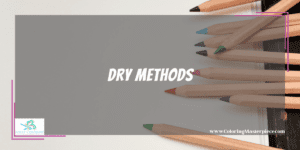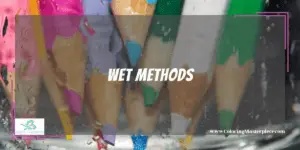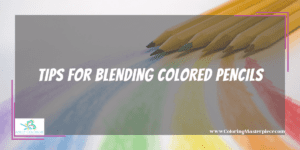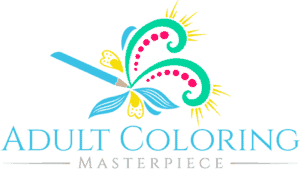Learning how to blend colored pencils will take your drawings or coloring pages to a whole new level, and it’s something that every colored pencil artist will want to learn eventually. But which colored pencil technique will work best for your art?
You can blend colored pencils in several ways:
-
-
- Use the Pencils to Blend
- Fingertip Method
- Tissue for Light Blending
- Cotton Swab for Small Areas
- Cosmetic Sponge for Precision
- Colorless Blending Pencil
- Blending Stumps and Tortillons
- Blending Markers
- Rubbing Alcohol Method
- Try Baby Oil
- Use Petroleum Jelly
- Mineral Spirits or Gamsol
- Turpentine Method
- Turpenoid Alternative
-
This guide will give you 14 examples of how to blend colored pencils, as well as some tips for making your blending more effective. We’ll also cover a few instances when blending might be just the thing your picture needs. There must be a million ways to blend colored pencils, and each technique will lead to a slightly different result. These 14 are our favorites, which we’ve narrowed down by:
-
-
- Convenience
- Effectiveness
-
Let’s start with the dry methods first.
Dry Methods

These dry methods are the most straightforward, which is why we’re starting with them. Most require tools that you’ll already have lying around the house, making them super convenient. Keep in mind that each one of the tools used in the dry methods can be used alone or combined with one of the solvents in the wet methods.
Use the Pencils to Blend
This first method involves no tools other than the colored pencils themselves. To do it, you simply apply heavy pressure and keep coloring over the area over and over again, until no white specks of the paper show through.
Burnishing, or filling in the white space completely, using only pencils is so natural that many people do it when they’re coloring and don’t even realize that it’s a technique. Well, now you know!
When blending using nothing but colored pencils and pressure, you’ll often get better results by using a lighter color over a darker one – one of the rare cases when you won’t be using the lighter color first.
Fingertip Method
The next method is also an automatic reflex for many adult colorists, which is using your fingertips to smear, smudge, or blend the colored pencil. Depending on how large the area is that you’re blending, this method can get pretty messy. It’s also not the most precise, especially once you’re reusing a fingertip that’s picked up color from another area. The natural oils in your fingertips often act as a sort of solvent, breaking up the binder that holds the pigments, allowing them to move more freely.
Tissue for Light Blending
The next step up from using a fingertip to blend is using a:
-
-
-
- Tissue
- Paper towel
- Toilet paper
- cloth
-
-
You can use these in a couple of ways:
-
-
-
- Lay it over your fingertip to create a barrier and blend the same way you would with your finger
- Fold it into a size that works best for the area you’re trying to blend and rub
-
-
The more pressure you use, the more blending will happen.
Cotton Swab for Small Areas
Cotton swabs work well as blending tools for small areas where tissue might be hard to navigate. It’s difficult to apply a lot of pressure to them though, so they’re best used for light blending.
If you need to apply more pressure, try holding it closer to the base, or even breaking a swab off of the stick. This essentially turns it into a tiny cotton ball (which you can also use as a blending tool).
Cosmetic Sponge for Precision
Cosmetic sponges are designed to apply and blend makeup, so they’re the perfect tools for precise blending. You can often buy these tools in wedge or teardrop shapes that allow for blending large or small areas depending on which side you use. They’re also easy to cut with scissors, so you can shape them however you want.
Colorless Blending Pencil
Another precision method of blending colored pencils involves using a colorless blending pencil, which is exactly what it sounds like. These blender pencils contain wax cores with no pigment that you can use to color over the area that you want to blend.
Using colorless blending pencils is much like the first example we talked about with using only pencils and pressure to blend. The key difference is that these won’t affect the color of your picture, whereas blending using a lighter pencil over a darker one will.
Blending Stumps and Tortillons
Blending stumps and tortillions are usually used for blending charcoal drawings, but they work on colored pencils as well. They’re made of paper that’s compressed into a pointed pencil shape and work for blending precise areas. Just go over the line or area that you want to blend with the tortillion, and it will start to soften.
Check out more blending tips HERE!
Wet Methods

These wet, or solvent, methods, work to dissolve the binder of the colored pencils, increasing their blend-ability. Many require solvents that you’ll probably be able to find under the bathroom sink, although there are a few that are more niche. Be aware that many solvents will alter the color of colored pencils, in addition to blending them. Make sure to do a test run before using any for the first time on a piece that means a lot to you.
It’s also worth making sure your paper is strong enough to withstand the pressure of friction caused by rubbing once it’s been dampened by a solvent. The very thin or inexpensive paper may pill or tear if you’re not careful.
Colorless Blending Markers
Colorless blending markers work in much the same way as colorless blending pencils, except their core contains alcohol. If you’ve ever used a highlighter over notes written in pencil, you’ve already experienced how these markers work – it’s the same concept, only they don’t deposit any color.
These blending markers often come with an angled tip, so you can blend exactly where you need to. It’s worth pointing out that you can use a regular alcohol-based marker for blending as well, but it will, of course, affect the color, so keep that in mind.
Rubbing Alcohol Method
The rubbing alcohol blending method is a less precise, but perhaps more convenient, method than using a colorless blending marker. Simply apply a small amount of rubbing alcohol to one of the dry tools mentioned above and use it to blend as needed. One benefit of using rubbing alcohol as opposed to the next few examples is that it dries very quickly, so you’ll be able to get back to work without having to wait for ages for the paper to dry.
Try Baby Oil
You can also use baby oil or mineral oil to blend colored pencils – just apply it to your tool of choice and use it as normal. Baby oil can change the colored pencil colors a bit, often making them brighter.
Use Petroleum Jelly
Then using petroleum jelly to blend colored pencils, remember that a little goes a long way. Gently run a tool over the jelly to pick up the thinnest layer you can get, and start blending. Remember that you can always add more, but it’s hard to come back from it if you glop too much on at once.
Mineral Spirits or Gamsol
Gamsol and other mineral spirits (as well as the next two examples on this list) are made for thinning paint. Because they’re made to break up a binder, they work well for blending colored pencils. Gamsol is odorless, and generally won’t affect the color of your colored pencils or leave a residue. Just dab a little on your blending tool and blend as usual.
Turpentine Method
Turpentine is another solvent that’s made to thin paint, and it’s much stronger than gambol or turpenoid. It’s recommended to use this method outdoors or in an area with good ventilation. As you probably guessed, the method is largely the same as the other solvents – dab a little to your tool and carefully blend, taking care not to use too much pressure or tear the paper.
Turpenoid Alternative
For those looking for a more natural and less toxic alternative to the turpentine method, turpenoid is a similar, though weaker, solvent that you can try. Be sure to try it out on a test page first, though, since it can leave a yellowish residue sometimes, mostly if too much is used.
Tips for Blending Colored Pencils

No matter which colored pencil blending technique you decide to try, you’re going to have the best results if you set yourself up for success at the beginning. These tips will help you do just that.
Use Softer Pencils
Generally speaking, the softer and creamier the colored pencil, the more readily it will blend. That makes wax-based pencils ideal for blending, although oil and water-based pencils blend as well.
The Paper Matters
If you’re planning on using a lot of blending, it’s a good idea to go with a durable paper that will withstand lots of layering, rubbing, and potential solvents. It’s easier to blend on a smoother paper than a rougher or toothier one, so keep that in mind as well.
Use Light Layers
For most colored pencil blending, it’s a good idea to set yourself up using lots of light payers, rather than one very heavy one. That’s especially the case if you’re looking to fade colors into each other. The main time that this won’t apply is when burnishing or blending using only pressure from the colored pencils themselves as your tool.
Go From Light to Dark Colors
When blending one color into another, it usually works best to start with the lightest colors first and work your way up to the darker ones. You can always add pigment to a light color, but once a dark color’s laid down, there’s no great way of lightening it back up again.
Practice Makes Perfect
The only way to get good at blending is to practice regularly, trying different techniques until you find one you like. Most importantly, never try a new technique on a favorite drawing – always make sure to practice beforehand on a practice piece, since you never know exactly how it will turn out.
Uses for Blending
Although on the surface, blending colored pencils seems like it’s pretty much the same technique no matter what, it has a variety of uses.
Burnishing
Burnishing is the act of smoothing out the colored pencil pigment on a page so that absolutely no white paper speckles show through. It can also smooth out stroke patterns. Wet and dry methods work equally well for this.
Soften Harsh Lines
It’s good to remember that blending doesn’t have to be extreme, and can be used to subtly soften sharp lines in a piece. You might try softening the lines around the edge of a picture and leaving the middle sharp so it gives the appearance of being more in focus, for example. Generally speaking, if you want to keep blending subtle, dry methods and a light touch are the way to go.
Smooth Transitions of Color
One of the most popular, and perhaps trickiest, situations to use blending in is transitioning smoothly from one color to another. You can use wet or dry methods for this, but remember that the way you lay the color down initially is just as important as the blending aspect. Use light strokes and start with lighter colors, overlapping them evenly.
Mixing Colors
Blending can be used to mix colors, which is essentially burnishing over layers of more than one color, rather than over one. Using multiple colors can add warmth and depth to a drawing.
Shading
Another classic use of shading is smoothing out shading, which can give pictures a three-dimensional quality if done right.
Final Thoughts
The colored pencil blending methods above are some of the most popular and effective techniques used among colorists, but they’re not the only ones. Remember that this guide, like all art guides, is meant to be a jumping-off point for you to discover techniques and ideas and make them your own. Set aside plenty of time for experimentation in your art, and you might be surprised at what you discover.
Frequently Asked Questions
Which colored pencils are best for blending?
All colored pencils can be blended, especially if the solvent is added to the drawing. But softer pencils are naturally more blendable, so colorists who don’t wish to add solvent might prefer them for blending.
Which surfaces are best for blending colored pencils?
The best surfaces for blending colored pencils are smooth enough for the pigment to glide over and strong enough to withstand rubbing and potentially solvents. A smooth, high-quality paper is a good example of an ideal surface.
Maximize the benefits of coloring with my free adult coloring eBook and by signing up for my email newsletter HERE!
Disclaimer: The information provided by ColoringMasterpiece.com (“The Site”) is for general informational purposes only. All information on the Site is provided in good faith, however, we make no representation or warranty of any kind, express or implied, regarding the accuracy, adequacy, validity, reliability, availability, or completeness of any information on the Site. Under no circumstance shall we have any liability to you for any loss or damage of any kind incurred as a result of the use of the Site or Reliance on any information provided on the Site. Your use of the Site and your reliance on any information on the Site is solely at your own risk. This blog post is for educational purposes only and does not constitute legal advice. Please consult a legal expert to address your specific needs.
Terms and Conditions: https://coloringmasterpiece.com/terms-and-conditions/
